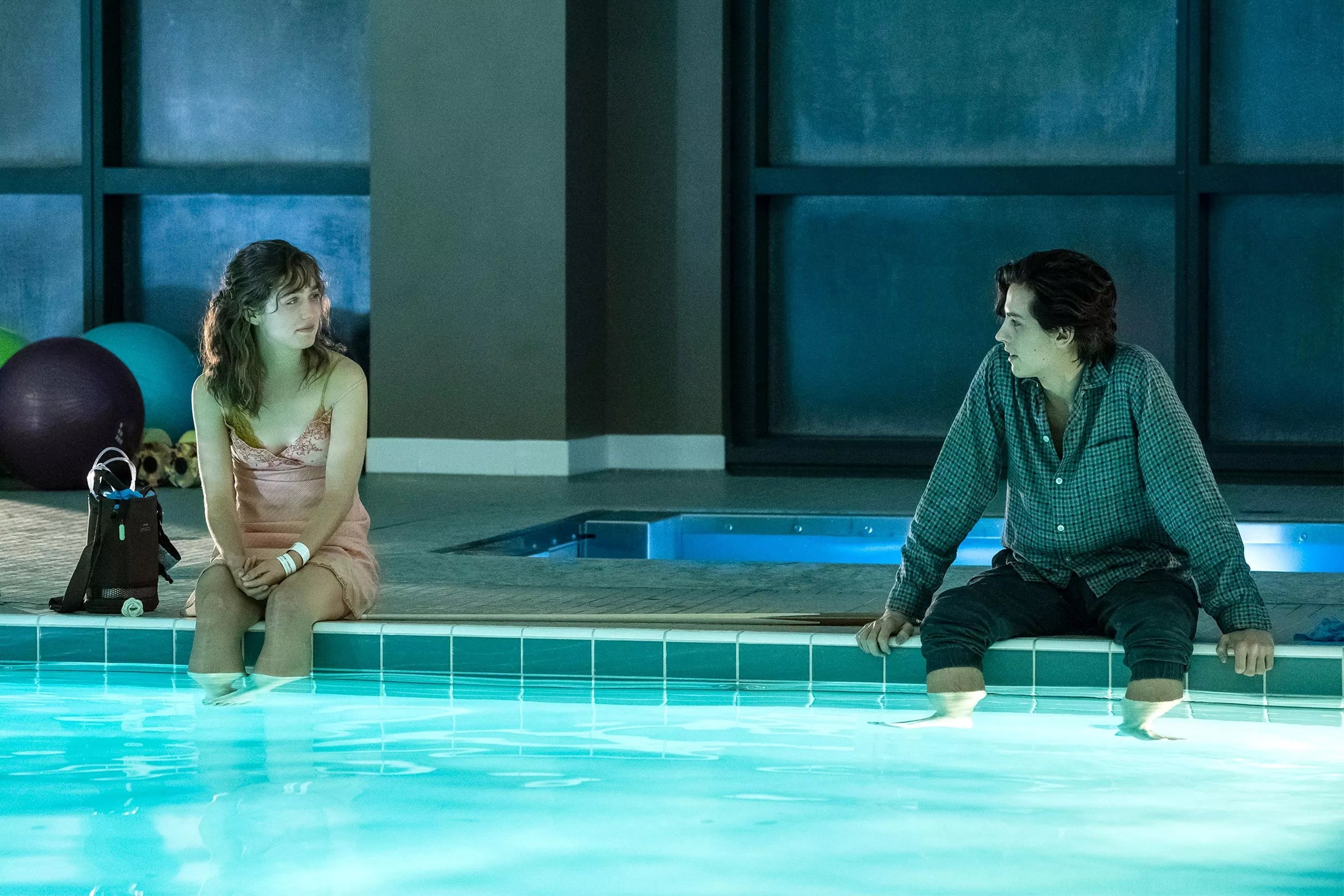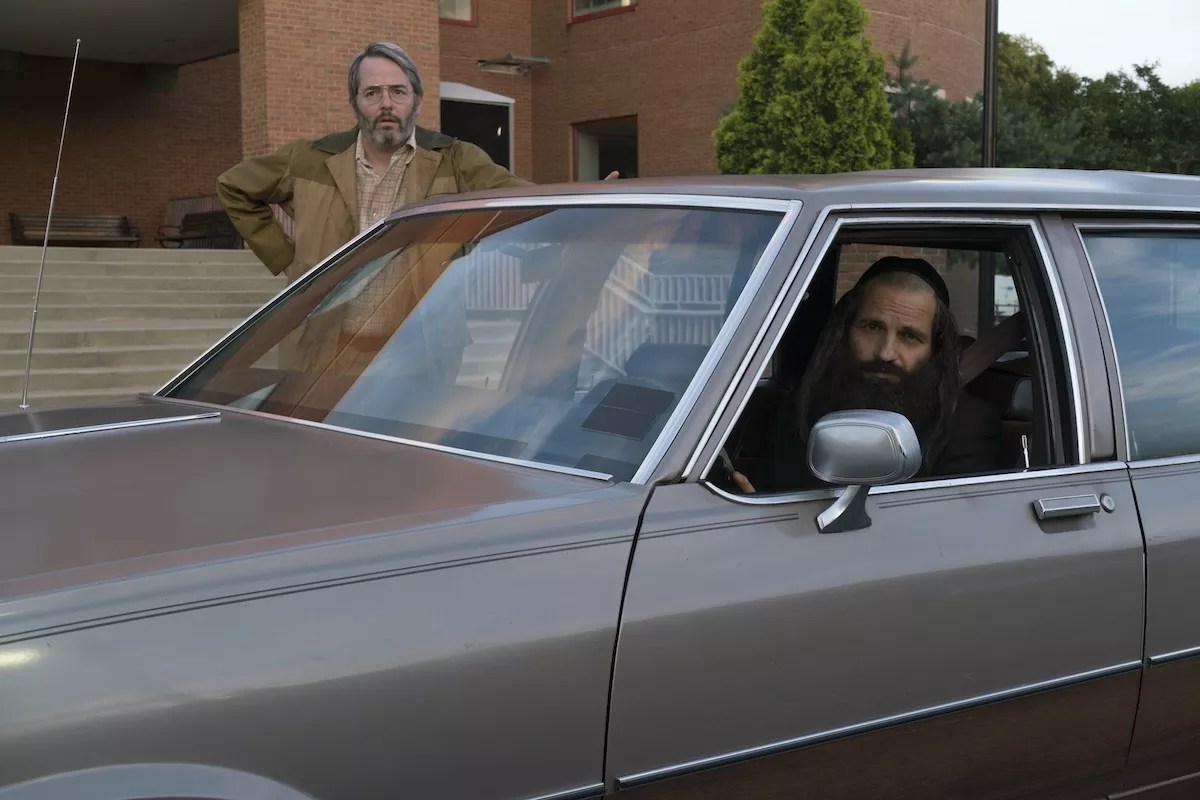
CBS Films

Audio By Carbonatix
Five Feet Apart. Noses blowing and heavy sobs will be heard around the world when Five Feet Apart releases this week, another entry into the odd little subgenre that is Romance Featuring One or More Terminally Ill Characters (whose most popular film is undoubtedly The Fault in Our Stars). At the core of Justin Baldoni’s feature is cystic fibrosis (CF), a progressive genetic disease explained by Stella (Haley Lu Richardson) in a number of the YouTube videos she makes onscreen to spread awareness and showcase her life living with CF. A variety of CF complications can either limit or extend the life expectancy of these characters, with Stella high-up in line for a lung transplant and the new bad boy in the hospital, Will (Cole Sprouse), knowing his days are numbered if this new treatment doesn’t work.
Where Sprouse is saddled with a bad-boy-gone-good routine (think Riverdale‘s Jughead, if the show had any self-awareness and humor about itself), there’s a deep sincerity in Haley Lu Richardson’s eyes that makes for a compelling performance despite the terrible monologues she’s handed. What few things the film does to subvert expectations of these narratives feel half-hearted when paired with montages and pop songs, the same stale tale of a girl giving up control because of a reckless guy, and tropes ranging from the gay best friend to the near-death experience that changes everything.
Baldoni and writers Mikki Daughtry and Tobias Iaconis occasionally hone in on a fascinating theme: intimacy when confronted with distance. (People with CF are told to maintain a six-foot distance from one another to prevent bacteria exchange, with Stella “reclaiming” one foot to rebel against a condition that has taken so much from her.) A moment as simple as two individuals removing their clothes in front of each other to reveal their scars speaks volumes – but is inevitably hampered by the same “she doesn’t know she’s beautiful” bullshit trope used by many a romance film.
Glimpses of the struggle to find and communicate love through screens, and without touch, could be genuinely insightful if they weren’t so underdeveloped for the sake of another banal flirtation scene. Baldoni and his collaborators have their hearts in the right place, but Five Feet Apart is an exhausting experience, one that relies on the shameless manipulation of the audience more often than not. Opens wide Thursday, March 14. -Juan Antonio Barquin
Will you step up to support New Times this year?
At New Times, we’re small and scrappy — and we make the most of every dollar from our supporters. Right now, we’re $18,000 away from reaching our December 31 goal of $30,000. If you’ve ever learned something new, stayed informed, or felt more connected because of New Times, now’s the time to give back.

Climax
A24
Climax. Gaspar Noé has been a provocateur from the get-go, crafting indulgent works that deal with life, violence, sex, death, and the trauma of birth in ways both subtle and not. After pairing up with cinematographer Benoît Debie, Noé’s films feel more like technically intriguing experiments to navigate the same themes in different ways, often attempting to isolate the audience as much as possible. With Climax, he lands somewhere between a deeply frustrating experience and the closest thing to a crowd pleaser you’d expect from him.
At its barest bones, Climax is about a group of dancers whose sangria at a post-rehearsal party is laced with LSD. Its most thrilling moments involve watching dancers move their bodies to the music of Cerrone (a 5+ minute remix of “Supernature” serves as a gorgeous introductory dance number), Thomas Bangalter, Aphex Twin, Giorgio Moroder, Soft Cell, and beyond. The movement comes from both pleasure and pain, each fascinating to watch as the camera glides and follows through an auditorium, hallways, and bedrooms.
Noé feels no shame in referencing other films and filmmakers throughout, and an opening sequence involving interviews with each dancer framed by VHS tapes and books (from Suspiria and Querelle to Patricia Hearst’s Mon Voyage En Enfer and Stefan Zweig’s Nietzsche) clearly prepares the viewer for what’s in store. Possession is the most notable and successful reference, with Sofia Boutella throwing herself against walls like Isabelle Adjani in her iconic scene. But Noé also leans into certain Godardian flourishes (intertitles being the most unnecessary) that don’t necessarily work.

Good Deed Entertainment
To Dust. Death: the ultimate joke on all the effort one puts into life. A movie ruminating on it should approach the subject with quirky humor. Using that droll approach with his feature debut, To Dust, director-writer Shawn Snyder, who grew up in Miami and Cooper City, certainly gives it a shot. It doesn’t always work, but he makes a bold attempt at looking for humor in the solemn subject matter by presenting a Hasidic Jew struggling to come to terms with tradition and science after he loses his wife to cancer.
The film made its Southeast US premiere at the Miami Jewish Film Festival in
Their shenanigans as they try to understand what might be happening with the deceased’s body vary from gross to hilarious to bittersweet, depending on your taste for black comedy. It’s not easy to pull off this brand of humor. Not everyone can be Wes Anderson, and sometimes the cracks show in the supporting cast’s simple deadpan that pales against the tension brought to the material by the veteran actors. Even though the film sometimes creaks and groans with the effort in the jokes, To Dust has a morbid charm few filmmakers would ever dare undertake. Opens Friday, March 15, at AMC Aventura 24 and at the Classic Gateway Theatre. – Hans Morgenstern

The Orchard
Combat Obscura. A puff of smoke blows out from a building in the distance across a field in Kajaki, Afghanistan. “Holy shit, that’s the wrong building,” declares an off-camera Marine in this documentary from the perspective of troops in the First Battalion, Sixth Marine Regiment, sometime in 2011. As the explosion chain reacts and grows, that same Marine adds, “Holy shit! Yeah, boy!!” Such is the disturbing irony that sets up the no-holds-barred, on-the-ground commentary that accompanies the often-startling images of Combat Obscura. The footage was shot by a then 18-year-old Miles Lagoze, who enlisted in the Marines to be a combat cameraman.
The documentary, with its shaky, spastic-camera movements, often feels as if it were shot by unaccompanied minors documenting amateur hang sessions at a skatepark – except these young people are in a war zone, out to crush the Taliban in the name of freedom for Afghanistan. Lagoze has sat on the footage for years, and though he provided approved material to CNN during the war, he still had a gold mine of footage never approved for release by the Department of Defense. Over two years, he threaded some of that together with no omniscient commentary or even text identifying the speakers, just raw footage revealing Marines as fallible human beings. “The Marine Corps is filled up with the most fucked-up individuals I ever met,” says one soldier puffing on a cigarette stuffed with hashish. “Just like me.”
These guys curse, wrestle each other in their camp like boys on a

Mateo Contreras
Birds of Passage. If you’ve ever wondered about the real story behind the marijuana growers who kicked the illegal drug trade out of Colombia, Birds of Passage is your film. Beginning in 1968, with a scheme to make quick money for a dowry among indigenous tribes, this crime drama is a Shakespearean rumination on greed and how it can tear families apart. Sectioned into five “cantos,” from humble beginnings to rise and fall, the film has an epic quality akin to the Godfather movies.
Ciro Guerra, whose Embrace of the Serpent in 2016 was the first Oscar-nominated movie from Colombia,
At the center is Rapayet (José Acosta), whose scheme to marry Zaida (Natalia Reyes) goes so well that his partner in crime, Moises (Jhon Narváez), makes a connection with a “gringo” for repeat business. From Zaida’s ruthless mother (Carmiña Martínez) to her spoiled younger brother Leonidas (